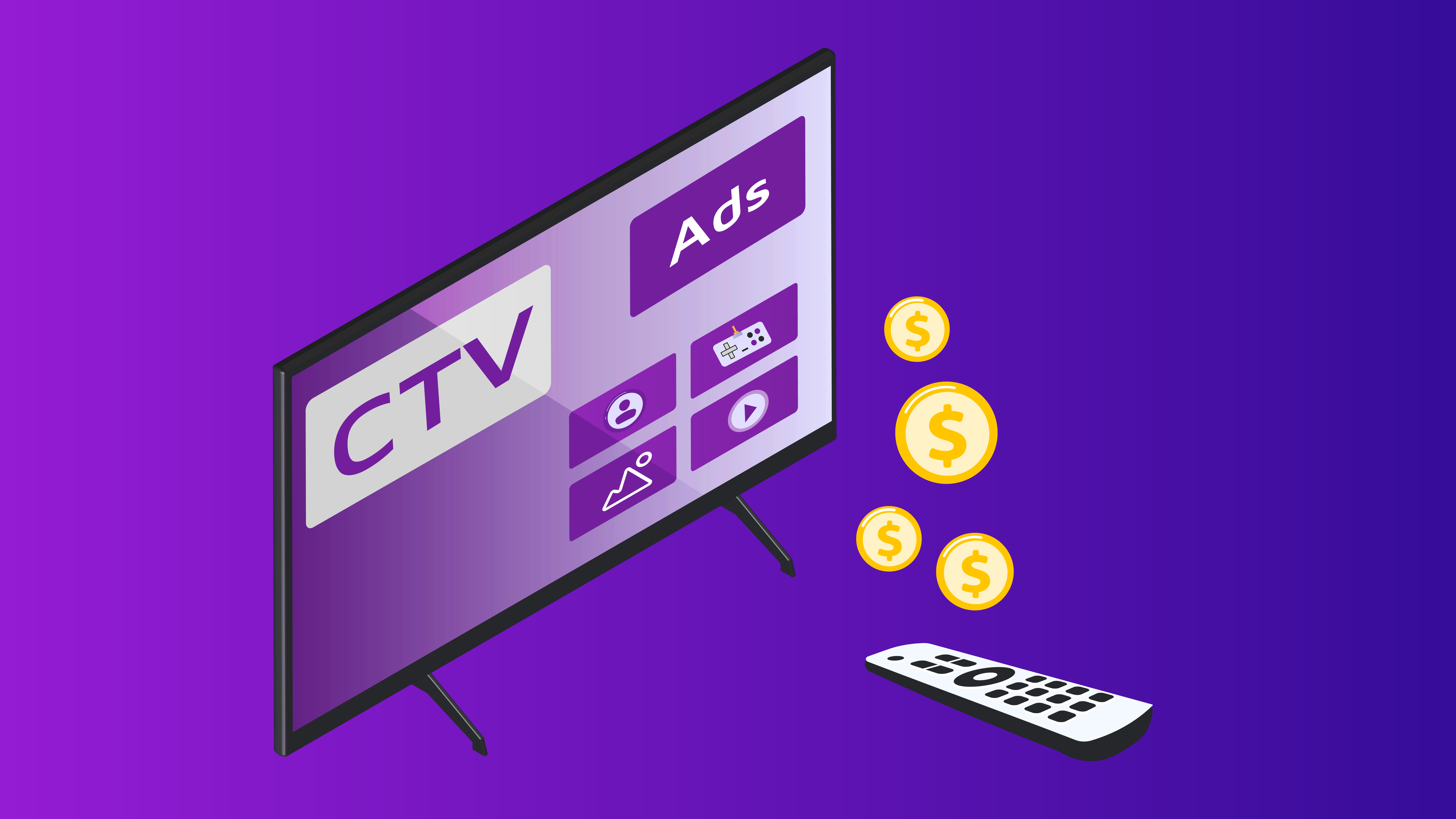The Forward Momentum of CTV
Connected TV (CTV) has emerged as a crucial platform for publishers in the APAC region. It will likely be a key advertising platform as year-end promotions and holiday campaigns begin. Amagi reported that Connected TV (CTV) users increased by 247% in the APAC region between Q4 2021 and Q4 2022. The CTV market is expected to double by 2024 in India alone. With adoption rates growing at more than 80%, users are shifting back to big screens. As brands prioritize CTV in their strategies, we expect increased monetization for publishers by the end of the fiscal year.
How can publishers harness this momentum of CTV’s rising popularity?
A joint study by GroupM and Kantar presents a compelling case for prioritizing CTV advertisements – 84% of participants believed TV ads influence purchase decisions, and 63% of CTV users find ads more personalized. CTV’s superior targeting and user engagement enable brands to reach their audience effectively.
CTV as a platform provides publishers with better returns on their investment through multiple revenue streams – paid subscriptions, ad-supported content, and brand deals. Advertisements are a unique opportunity for publishers to increase revenue in times of economic downturn and from households on a budget. Publishers quick to recognize this shift have emerged as industry leaders. Netflix, Hulu, Disney+, and Amazon Prime dominate most regions. Local platforms – Indonesia’s Vidio, Australia’s Stan, and South Korea’s Tving, to name a few – are now gearing up for competition.
Key drivers for CTV’s popularity in APAC
There is a significant shift in how people entertain themselves now. Viewers now find that subscriptions are cheaper than a trip to the theater. Inclusive and diverse content is in demand. The demand is coming at the heels of rising disposable incomes. The internet penetration in the APAC region covers an impressive 2.6 billion users. All this has incentivized OTT platforms to increase investment in hyper-local, inclusive, and diverse content. Netflix Original and Hotstar Original are quintessential examples.
India is leading this shift in channel deliveries at 142% YoY growth. Other regions are not far off, with the Philippines (81%), New Zealand (74%), Japan (73%), and Australia (50%). Hours of Viewing (HOV) and ad impressions are rising consistently at 63.3% and 77%, respectively, in India alone.
Online streaming of sports events, especially cricket and football, has uniquely helped boost viewership. On October 22, 2023, Disney+ Hotstar set a new record for global streaming viewership, with 43 million concurrent viewers watching the India v New Zealand match of the ongoing ICC Men’s Cricket World Cup. This record is a testament to CTV’s growing appeal in the APAC region. The enhanced spectator experience makes users willing to cut corners in other areas before cancelling their subscriptions. However, for publishers, the question remains: how can they harness this rising popularity?
OTT platforms, popular among users for their accessibility and affordability, can gather nuanced data about their audience, including viewing histories and other metrics. This valuable data allows OTT partners to strategically feature advertisements from celebrities and brands that are most likely to resonate with their audience, resulting in higher engagement and increased revenue opportunities.
Brand collaborations are also an effective way for OTT platforms to attract an audience. Disney+ Hotstar, for instance, partnered with multiple brands to sponsor digital live streaming of the ICC Men’s Cricket World Cup. PhonePe, Mahindra & Mahindra, and Hindustan Unilever were among the 26 brands sponsoring free live streaming of the event. An associated ad campaign promoting this collaboration featured the renowned cricketer Kapil Dev. This move was instrumental in Disney+ Hotstar’s record-breaking viewership.
Strategies for Capitalizing on the Current Momentum
- Interactive advertisement: The festive season is the prime time to target the premium audience. People spend more during this time than any other time of the year. Relevant content is then imperative to retain the attention of the audience. On-screen ads promoting discount coupons or sales are more likely to elicit a response. Interactive advertisements turn this passive user into an active user. It engages a user with a call to action. It can be a QR code, email sign-up, or a direct add-to-cart from the CTV.
- AI integration: Rapid decision-making is crucial in the programmatic ad space. AI and machine learning allow for real-time analysis of vast data. This enables the rapid evaluation of digital data points and the timely display of relevant ads and recommendations to the viewers, resulting in a more personalized viewer experience.
Often advertisers have milliseconds to capture the audience’s attention. The key to success for publishers lies in delivering authentic and valuable impressions. This not only attracts more lucrative deals but also drives higher revenue. Additionally, AI tools can serve as a quality assurance mechanism by detecting and mitigating fraudulent CTV media, maximizing value for all parties.
- Multilingual content: The APAC region comprises people who speak various languages. Recognizing the importance of local content is vital to growth in this region. Tailor-made, region-specific content engages a broader audience. Content that resonates with the users drives higher engagement. However, the language barrier poses a significant challenge in driving traffic. AI can help translate content into multiple languages suited to the viewer at a minimum cost. It can take the form of dubbing and subtitles.
STAGE takes it a step further by creating original content catering to local dialects in India. This approach creates a stronger connection of the audience with the content, incentivizing paid subscriptions. Additionally, it opens opportunities for collaboration with local businesses or brands looking to expand their reach. By making content as accessible as possible, publishers can diversify their revenue opportunities.
- Integrate voice assistants: VAs can help pull in customers with varying literacy levels, comfort with using technology, and cognitive and physical abilities. For instance, Amazon’s Alexa can search, play, and control Amazon Prime and Fire TV on compatible devices. Netflix is ramping up efforts to integrate Audio Description, a tool to make visual content accessible for the visually impaired, in their content.
Publishers can leverage this technology to set themselves apart from the competition. Voice Assistants can enhance the user experience by providing engaging conversational content. These interactions result in data points publishers can then analyze to further personalize content recommendations and advertisements.
Moreover, this opens doors for monetization through, for example, exclusive voice content and sponsorships. A well-executed voice experience not only boosts brand recognition, it demonstrates a commitment to cater to the diverse needs of users, encouraging retention and conversions.
CTV will likely be a key advertising platform in the APAC region this holiday season. By current projections, revenue from the multichannel advertisement will be worth $45 billion by 2025. Brands are looking towards CTV advertisements as their superior targeting and user engagement enable them to reach their audience effectively.
Amidst this development, publishers can expect to close this quarter with a higher revenue. APAC publishers need to embrace this shift and develop strategies that exploit the full potential of CTV. What’s your take on this trend? Let us know your thoughts in the comments or email us at insights@andbeyond.media.




Leave a Reply